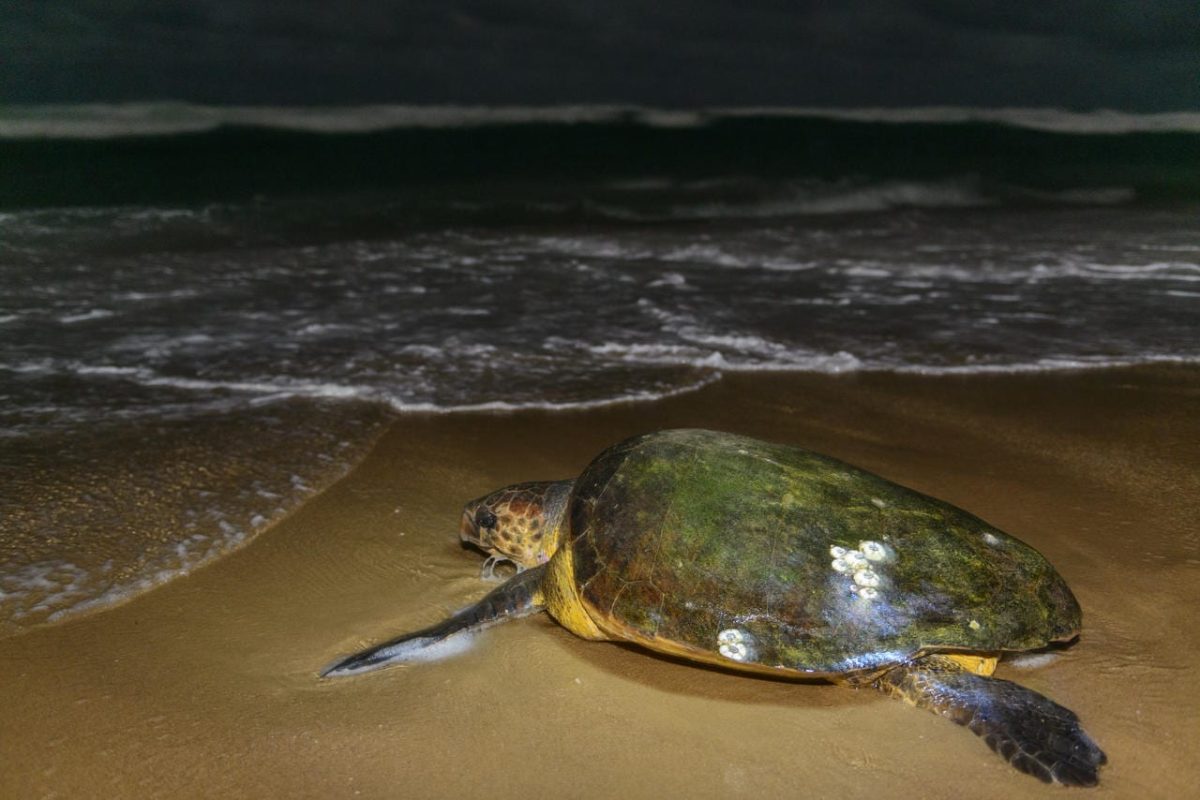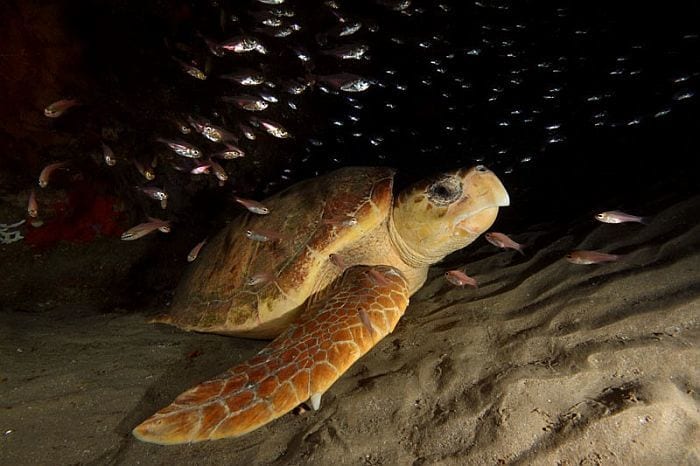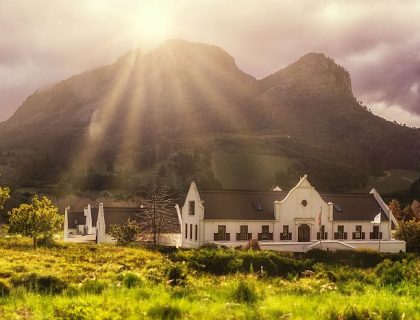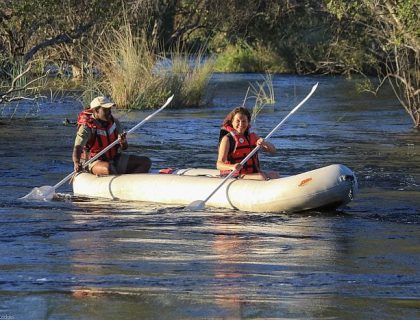One of the most magical experiences along Southern Africa’s coast is witnessing sea turtles nesting or hatching. Between November and March, these ancient mariners return to the very beaches where they themselves once hatched. They are guided by instincts and navigational skills that still baffle scientists. It is one of those remarkable poignant mysteries of nature.
Around November, as the sun sets and the tide rises, female turtles emerge from the surf, hauling themselves up the sand in the soft darkness to dig their nests. They lay up to a hundred eggs at a time, bury them carefully, and slip silently back into the ocean.
Weeks later, under the same stars, tiny hatchlings fight their way to freedom. This is a perilous sprint from sand to sea, dodging crabs, sea birds and other potential predators along the way. Only a few will survive to adulthood, perhaps returning decades later to repeat the cycle.
It’s a humbling reminder of just how precious – and fragile – these wild coastlines are.



The Turtle Season
The turtle-tracking season runs from November through February, occasionally into March.
- November to December: Nesting season when the adult females lay their eggs
- Mid-January to February: Hatching season when baby turtles race for the ocean
Because turtles only venture ashore under cover of darkness and high tide, turtle tracking is a night-time adventure, with timing dependent on the tides. (The turtles need the safety of darkness to find a suitable nesting place above the high tide mark.) So, some excursions depart just after sunset, whilst others might begin after midnight. It just depends on how your dates coincide with the tides.
Chat to us
Few wildlife encounters rival watching a turtle return to the very beach where it was born. We’d love to help you experience it for yourself.
Plan your Trip with Cedarberg AfricaWhere to Go: KwaZulu-Natal & Southern Mozambique
The best place to be to witness the incredible experiences is the northern coast of KwaZulu Natal in South Africa or Southern Mozambique. These beaches form part of a continuous marine ecosystem which is warm, protected, and still remarkably unspoilt.
Two species nest here:
- Loggerhead Turtles (Caretta caretta): smaller, reddish-brown shells; the more common species.
- Leatherback Turtles (Dermochelys coriacea): enormous, prehistoric-looking giants — sometimes over two metres long and weighing up to 700 kg. They are critically endangered, and their survival depends heavily on the protection of these few resting sites
So how do the different lodges offer this unique experience? The lodges differ quite a bit in their approach to turtle tracking. So, if turtle tracking is a big attraction for you, take note…
Turtle Tracking at Thonga Beach Lodge
At Thonga Beach Lodge in northern KwaZulu-Natal, turtle tracking is a highlight of summer. The lodge holds a special South African Parks permit allowing guided 4×4 drives along the beach at high tide. This is a huge advantage, since you can cover more ground in search of nesting turtles.
Guides are trained to spot the faint glimmer of movement in the moonlight, switching off engines to approach quietly and avoid disturbing the animals. The experience lasts several hours and is available at an additional cost, with excursions limited in terms of numbers – to protect both the turtles and the dunes.
Guests often describe it as one of the most moving wildlife moments of their travels, more intimate and emotional than any game drive.
There is a chance that you may not be successful. But generally the turtles are spotted, sometimes only 15 mins into the excursion and sometimes much later.
Turtle Tracking at White Pearl
Further north, just across the border in Southern Mozambique, White Pearl Resorts offers turtle-tracking beach walks directly from the lodge during the same season. (This is complimentary for guests). These guided walks are gentler and shorter than Thonga’s drives, covering a smaller stretch of coastline. So sightings depend on luck and timing.
For those who simply want the possibility of seeing turtles while enjoying a barefoot evening stroll, it’s a delightful addition.
St Lucia Isimangaliso Wetlands Park
Turtle tracking is also possible from St Lucia, bordering the Isimangaliso Wetland Park, where community-run projects help monitor turtle nests as part of ongoing conservation efforts. This UNESCO World Heritage Site protects over 200 km of coastline and some of the last remaining nesting grounds for these endangered species.

How to Turtle Track Responsibly
Watching a turtle nest or hatch is one of nature’s most moving spectacles , but it’s also a moment of vulnerability for these endangered creatures. A few simple guidelines ensure your experience helps protect, not disturb, them:
1) Go with a licensed guide
Always join an official turtle-tracking excursion through an accredited lodge such as Thonga Beach Lodge or White Pearl Resorts. Their guides are trained to minimise disturbance and operate under strict conservation permits.
2) Avoid bright lights and flash photography.
Turtles rely on darkness for safety. Flashlights, phone torches, and camera flashes can disorient nesting females and hatchlings trying to reach the sea.
3) Keep a respectful distance.
Stay behind your guide, avoid loud noises or sudden movements, and never touch a turtle or her eggs.
4) Tread lightly.
Stick to the firm sand below the high-tide mark when walking and avoid trampling dunes where nests may be hidden.
Every turtle-tracking fee contributes directly to research, local employment, and the protection of future generations of turtles along this coastline.

Other Related Blog Articles: Thonga Beach Lodge versus White Pearl
Final Thoughts
Whether by 4×4 under a full moon at Thonga or by torchlight along the sands at White Pearl, watching a turtle’s ancient ritual is an unforgettable privilege. It’s a reminder that even in our fast-moving world, some wonders remain timeless. And still depend on our care.
Dreaming of seeing the turtles under the stars? Let’s help you time your trip perfectly: from nesting season to the best coastal lodges along the Indian Ocean.
Chat to our team about your Southern Africa beach adventure.
Turtle tracking in KwaZulu Natal or Mozambique – was written by Kate of Cedarberg Africa
Kate co-founded Cedarberg Africa in 1995 with her sister Ginny and has lived in South Africa for over 30 years. Having explored both the KwaZulu-Natal and Mozambican coastlines extensively, sometimes with her family in tow, she brings first-hand insight into what makes a beach lodge special, from eco-chic escapes like Thonga to polished hideaways such as White Pearl. Kate has personally evaluated many of Southern Africa’s best coastal and safari retreats, to give nuanced, experience-based recommendations.
Cedarberg Africa is a travel and safari company specializing in Southern and East African tailor-made itineraries. All our expertise and knowledge comes at no extra cost to you!











